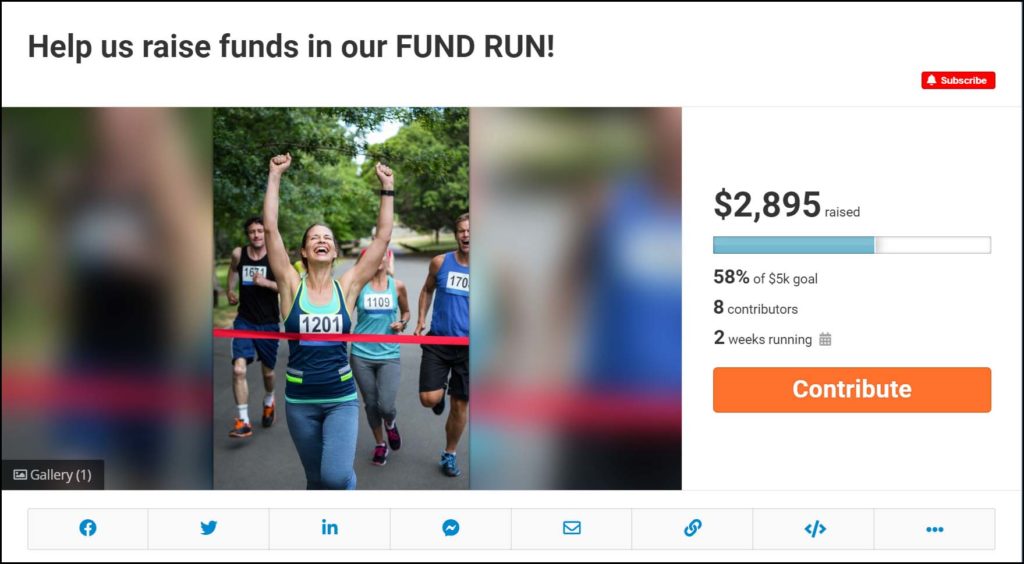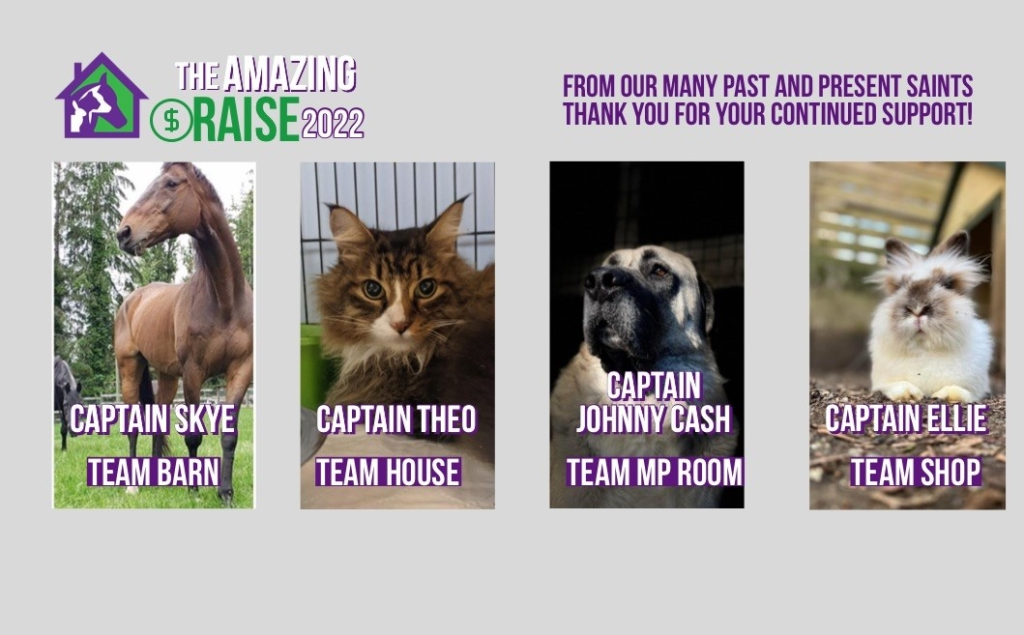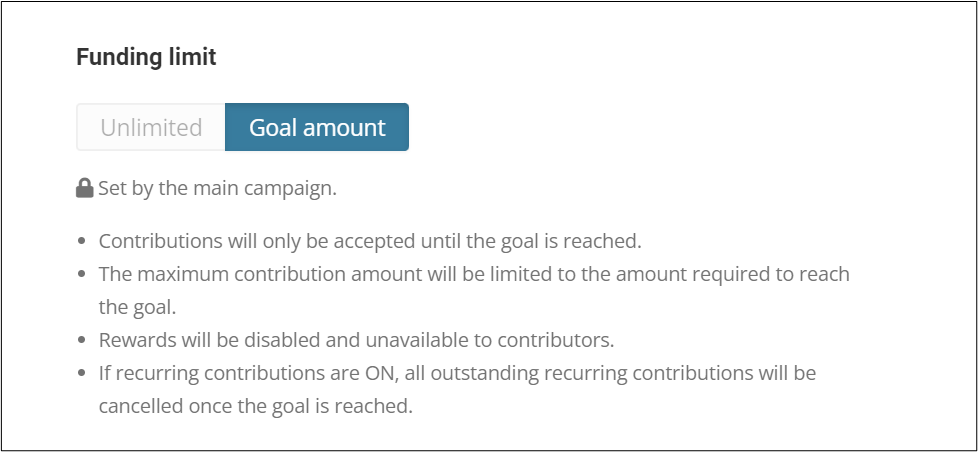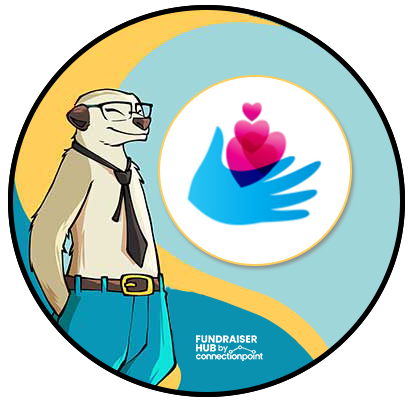Long-running fundraising campaigns with big goals to fund a general cause are going the way of the dodo (at least they were until scientists began talking about bringing the dodo back…). We are moving into the age of Microprojects™ to get donors what they’re looking for most: impact.
What are Microprojects™?
Large fundraising campaigns can break down into smaller ones called ‘sub-campaigns,’ all umbrellaed under a ‘main campaign.’ The term ‘microproject’ refers to the collective project:

Each sub-campaign looks like any other campaign, with a goal, amount raised, story, and activity.
The main campaign shows the collective goal and amount raised for all projects and contains the settings for all sub-campaigns.
Why are Microprojects™ useful?
Success in digital fundraising comes from the story you tell and the audience you have to tell it to. If your story is generalized around a bigger idea, readers may have a difficult time connecting emotionally with the cause and understanding the impact they have.
A study done by the Lilly Family School of Philanthropy found this:
(W)hat is clear from the present research is that a message that shows the impact of a nonprofit’s work draws people in and causes them to want to connect.
Osili, U., et al. January 2022
Therefore, increase your chances for success by effectively communicating impact using microprojects.
When you update a campaign, notifications are sent to all who supported that campaign. When you update a sub-campaign, notifications are sent only to those who supported THAT sub-campaign, not the main campaign or the other sub-campaigns. This means you have the opportunity to speak about different supporters’ interests.
Another way microprojects help communicate impact is through the psychological effect of breaking down a large sum of money. Simply put, smaller goals are easier to achieve, and many supporters look for this confidence in success.
To help with this point, take a look at these two campaigns. Which are you more likely to donate to?


Optics matter. Digital fundraising brings in those who prefer to give smaller amounts multiple times (or to multiple projects). It’s easier for those supporters to see the value in their contribution when it adds a more significant chunk to that goal meter.
Examples
Microprojects aren’t ideal for all campaigns, of course. But here are two scenarios to explain what they can be helpful for:
Example 1: The Commemorative Air Force (CAF) and the 12 Planes of Christmas

Every year, the CAF organizes a fundraising event to provide assistance and draw attention to aircraft needing restoration, maintenance, or repairs. Supporters can donate to a specific aircraft project (sub-campaign) or the main campaign.

A supporter could be interested in one of these planes for many reasons: perhaps their relative flew a specific model in war, or they’re passionate about a particular model’s engineering. Or they could be like me: with zero connection or knowledge of aircraft in general, let alone of another country’s air force. What I can connect with are the nicknames.
This sub-campaign spotlights the PT-17 Stearman N50329, nicknamed “Rosie.” I may be Canadian, but even I know who ‘Rosie the Riveter’ was, and as a woman, I can certainly connect with the story behind that nickname. The coolest part is the most recent update in that campaign: a letter, hoping to inspire support, from a real “Rosie”!
(Note: we cannot directly link to updates. If you’re curious about this update, view the sub-campaign and scroll down to the ‘Updates’ tab in the story.)
Not only do these sub-campaigns help speak to different potential supporters, but they also help divvy up the work promoting the overall campaign. The CAF gives different bases ownership of different sub-campaigns.
Yep – different sub-campaigns can have separate ownership!
This means more users are sharing these campaigns with a broader audience – and it doesn’t matter if each sub-campaign hits its target goal because all funds roll into the main campaign, which (at least in this case) is the goal we care about.
Example 2: S.A.I.N.T.S and the Amazing Raise

The Senior Animals In Need Today Society (SAINTS) runs its Amazing Raise campaign annually to support its shelter operations.
It’s common for rescues to have microproject campaigns because:
- Each animal has a story, and most people contributing would LOVE to hear how ‘their’ animal is doing!
- It’s fast and easy to clone a campaign for a new animal with all the basic shelter info already attached.
- They can still show supporters how much they’ve raised together for all animals, promoting a collective movement.
- TONS (hyperbole intended) of shareable content to drive visitors to the campaign.
SAINTS took it one step further and made it a competition! They engaged their supporters further by pitting each campaign against the others in a fun race to see who could raise more.
This special shelter continually proves its effectiveness (and, of course, the generosity of its community) by racing past its goals each year!
Microprojects™ and restricted funding
A common concern about inserting such specifics into a fundraising campaign is restricted funds – meaning the obligation nonprofits have to spend funds raised for a specific reason on that particular reason only.
If a campaign is worded correctly, this doesn’t need to be a concern. As long as supporters can easily read somewhere in your story where the funds collected will go, if not the specified project, and you continue to be transparent after funds are collected, then you have done your due diligence.
However, there are two further ways you can effectively communicate where the funds will go:
1. You can enter a caveat in the checkout flow prompting for unrestricted usage of funds, which a supporter must acknowledge to continue:

2. Each sub-campaign can automatically end once its goal is hit, preventing any further donations to that campaign. See how here.

Summary
Microprojects™ help campaigns succeed by:
- Breaking large asks into smaller, easier-to-achieve goals,
- Adding the ability to tell specific stories and expanding your reach across different interests,
- Generating more content to share and increase support
- Allowing more team members to take ownership of different campaigns and boosting audience numbers
- Providing a healthy competition element between campaigns.




